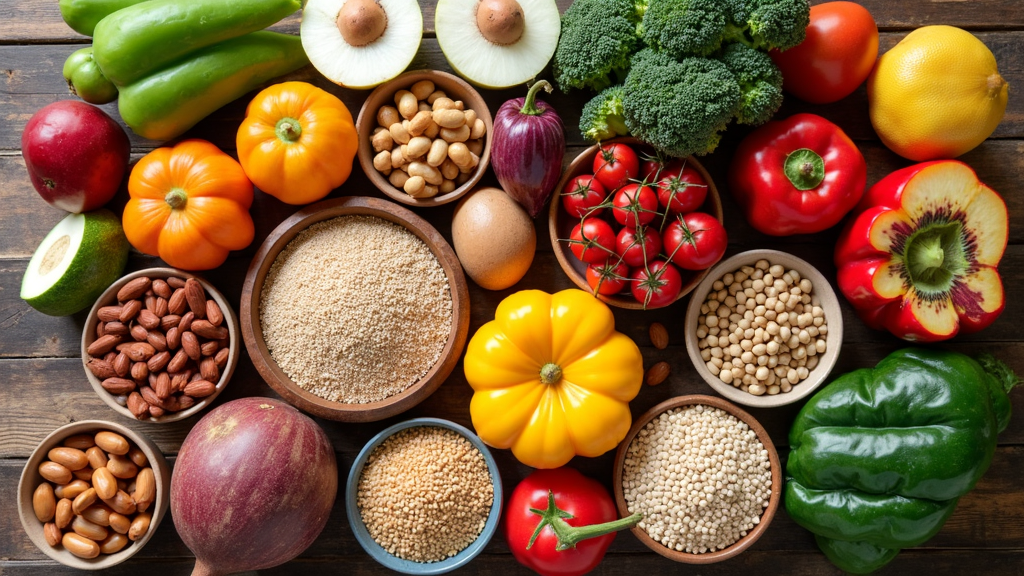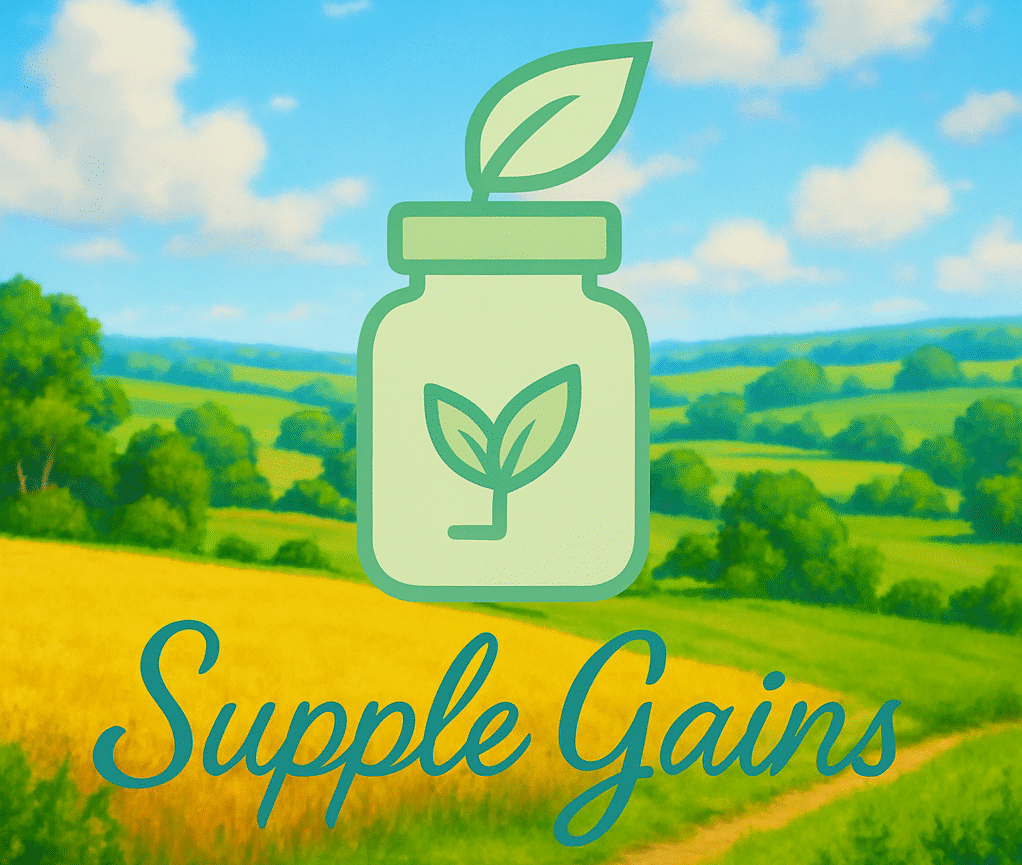Getting enough fiber from food might sound a bit less exciting than the latest health fad, but for anyone who cares about well-being, especially on a plant-based diet, fiber deserves a big spotlight. I’ve tried lots of different eating styles, and one thing that stands out about eating mostly plants is how fiber makes a difference you can actually feel. There’s a lot of buzz about protein and vitamins, but fiber has plenty of its own perks that are super important, especially if you’re swapping animal products for more plants.

Why Fiber Matters in Plant-Based Diets
Fiber is a type of carbohydrate that your body doesn’t digest the way it does other carbs like sugar or starch. Instead of breaking it down for energy, fiber passes through your gut, bringing plenty of benefits along the way. I used to think of fiber as just that thing in old school cereal, but on a plantbased diet, fiber comes from veggies, fruits, beans, lentils, seeds, grains—you get the idea. When you build meals around plants, you’re naturally packing in fiber, which ends up helping with digestion, energy, and even immunity.
Plantbased eating isn’t just about ditching meat or dairy; it’s also about getting nutrients straight from the source—plants. That means everything from leafy greens and berries to chickpeas and quinoa, all packed with natural fiber. According to the USDA, most adults need somewhere between 25 to 38 grams of fiber a day, but the average American only eats about half that. When I switched to eating more plantbased foods, reaching those numbers felt a lot more doable without any special supplements. Plus, focusing on plant foods offers a wide variety of tastes and textures, keeping meals interesting.
The Different Types of Fiber: Soluble and Insoluble
There are two main kinds of fiber—soluble and insoluble—and both show up in plantbased foods:
- Soluble fiber dissolves in water and forms a gellike substance in your gut. You’ll find it in foods like oats, beans, apples, and carrots. It’s great for keeping cholesterol and blood sugar steady.
- Insoluble fiber doesn’t dissolve in water. It acts more like a gentle broom, helping move food through your digestive tract. Whole wheat, nuts, seeds, and many veggies pack this type of fiber, which is really useful for keeping you regular and avoiding constipation.
Most plant foods have a bit of both, but some lean more one way or another. The cool thing about a plantbased approach is that eating a mix of foods means you’re getting a blend of both fibers without really thinking about it. This balance supports well-rounded gut health and can keep your digestive system humming along smoothly.
How Fiber Supports Digestive Health
When people talk about fiber, gut health usually comes up, and for good reason. Fiber keeps things moving in your digestive system, making life easier for your gut. Insoluble fiber bulks up your stool and helps it pass more easily, while soluble fiber feeds the good bacteria that live in your colon. These bacteria, which make up your gut microbiome, love breaking down fiber and turn it into compounds like shortchain fatty acids that help tone down inflammation in the gut.
I’ve noticed improvements in digestion and less bloating ever since I focused on plantbased fiber. Even if things like beans or cruciferous veggies (think broccoli or cabbage) can cause a little gas at first, your body tends to adjust after a couple of weeks. Over time, your microbiome adapts, and you’ll probably feel even more comfortable eating a variety of fiber-rich foods.
Benefits of Fiber Beyond Digestion
- Stable Blood Sugar: Eating foods rich in fiber, like lentils and berries, slows the absorption of sugar and helps prevent post-meal blood sugar spikes, which is pretty handy for energy levels and focus.
- Cholesterol Levels: Certain fibers, especially from oats and beans, can lower LDL (“bad”) cholesterol by trapping it and moving it out of your body.
- Weight Management: Highfiber foods are filling, so you’re less likely to overeat or reach for snacks between meals. I find that a big salad with beans and seeds keeps me satisfied way longer than a plate of pasta alone.
- Gut Microbiome: Fiber acts as food for beneficial gut bacteria. The more diverse your plant intake, the happier your microbiome is. A happy gut can pay off with a stronger immune system and even better mood, according to research from sources like the Harvard T.H. Chan School of Public Health.
Recent studies have also turned up evidence that high-fiber diets can be linked to lower inflammation throughout the body and possibly improved brain health as well. These indirect effects add long-term value to stocking your meals with fiberfilled foods.
Easy Ways to Pack More Fiber into Plant-Based Meals
When starting to eat more plants, adding fiber is actually pretty simple. These tricks always work for me:
- Start with Breakfast: Overnight oats, chia pudding with berries, or a wholegrain toast topped with smashed avocado all deliver a fiber kick in the morning.
- Add one new veggie: Throwing spinach into smoothies, bell peppers in stirfries, or cauliflower into curries is easy and boosts the overall fiber count.
- Snack Smart: Opt for popcorn, nuts, carrot sticks with hummus, or trail mix over chips or candy bars.
- Go for Whole Grains: Choose brown rice, wholewheat pasta, or barley instead of their white or refined versions.
- Mix and match beans: Toss a handful of cooked lentils or chickpeas onto salads, soups, or sandwiches for texture and plantbased protein along with fiber.
If you’re stuck for ideas, try swapping white bread for sprouted grain bread, fixing up a homemade veggie chili, or mixing flaxseeds or hempseeds into oatmeal or smoothies for a quick hit of extra fiber. Planning meals ahead of time can also help make sure you hit your daily fiber target without feeling overwhelmed.
Common Pitfalls: What to Watch Out For
Jumping straight into a super highfiber way of eating can cause a bit of stomach upset at first. I remember the first week of really upping my veggie game; let’s just say my gut felt “busy.” Here are a few things I learned:
- Take it slow: Gradually increase the amount of fiber in your meals over a week or two, so your digestive system can adjust.
- Hydration matters: Fiber soaks up water, so drink plenty of fluids to help things move smoothly.
- Balance is important: Don’t ignore protein, healthy fats, or other nutrients. A bowl of fiberrich veggies is great, but pairing them with tofu, tempeh, or olive oil makes a more complete meal.
Working with Special Diets
If you have sensitive digestion or certain food intolerances, picking fiber sources that are gentle makes a difference. For example, peeled apples, cooked carrots, and oatmeal tend to be easier for most people than raw cabbage or big piles of legumes.
It’s always smart to ask a registered dietitian if you have GI issues or other health concerns, because they can tailor advice to fit your situation. Professional guidance can make this plantbased adventure feel smoother and safer.
Beyond the Plate: Why Fiber-Rich Foods Matter for Long-Term Health
High fiber intake is linked to lower risk of several longterm conditions. Research from organizations like Mayo Clinic and the World Health Organization links fiberrich diets to lower rates of heart disease, type 2 diabetes, and some cancers. Plantbased fiber also seems to help with healthy aging. There’s growing science on how wellfed gut bacteria can support your immune system and even help reduce inflammation markers.
- Fiber may help lower the risk for colon cancer and support a healthier gut lining.
- Steady digestive rhythm has a noticeable effect on energy, which I personally appreciate during long workdays.
- A diet full of fiber-packed foods can leave your skin looking better and may even play a positive role in mental health, according to new research.
By simply filling up half your plate with veggies, adding a side of legumes, and choosing whole grains, you’re already setting yourself up for a fiber-rich day. Keep experimenting with new plants and grains, and soon packing in more fiber will feel second nature.
Real-Life Inspiration: My Go-To Fiber-Rich Dishes
Adding fiber doesn’t mean boring salads or bland “health food.” Some of my favorite plantbased fiberrich meals are:
- Chickpea and veggie stirfry: quick to make, packed with flavor, and loaded with both protein and fiber.
- Hearty lentil soup: a classic for a reason, since lentils bring soluble and insoluble fiber to the party while being easy on the wallet.
- Homemade bean burritos: when wrapped up with sautéed peppers, onions, and brown rice, these make a filling meal that doesn’t skimp on taste or nutrition.
- Roasted root vegetable bowl: Try roasting sweet potatoes, carrots, and beets. Top with black beans and pumpkin seeds for a super satisfying, highfiber, and colorful meal.
Make your own fiber boosts by prepping veggie-packed grain salads, blending smoothies with leafy greens and berries, or trying new plant-based recipes weekly.
Frequently Asked Questions
Question: How can I tell if I’m getting enough fiber on a plant-based diet?
Answer: Most people notice positive switches, like better digestion and staying fuller longer, once they get enough fiber. Still, tracking what you eat using simple food journals or apps for a week can help you see if you’re close to the recommended daily intake.
Question: Are some fiber sources better than others?
Answer: Both soluble and insoluble fibers play their parts, so variety is key. Eating a mix of fruits, veggies, grains, nuts, seeds, and legumes covers all your bases.
Question: Can you get too much fiber?
Answer: It’s possible to overdo it, but most people don’t have that problem unless they suddenly make a huge jump. Any tummy trouble often goes away if you slow down or drink more water.
Key Takeaways
Fiber is a gamechanger in plantbased eating. It helps with digestion, makes meals more filling, supports good gut bacteria, and ties into better health outcomes over time. By eating a range of plant foods—fruits, veggies, legumes, whole grains, nuts, and seeds—getting more fiber happens naturally and comes with plenty of delicious options. Pay attention to how your body feels, take change at your own speed, and enjoy all the benefits that come with plantpowered fiber. A little forward planning and adventurous taste testing can make high fiber eating both tasty and rewarding in the long run.
